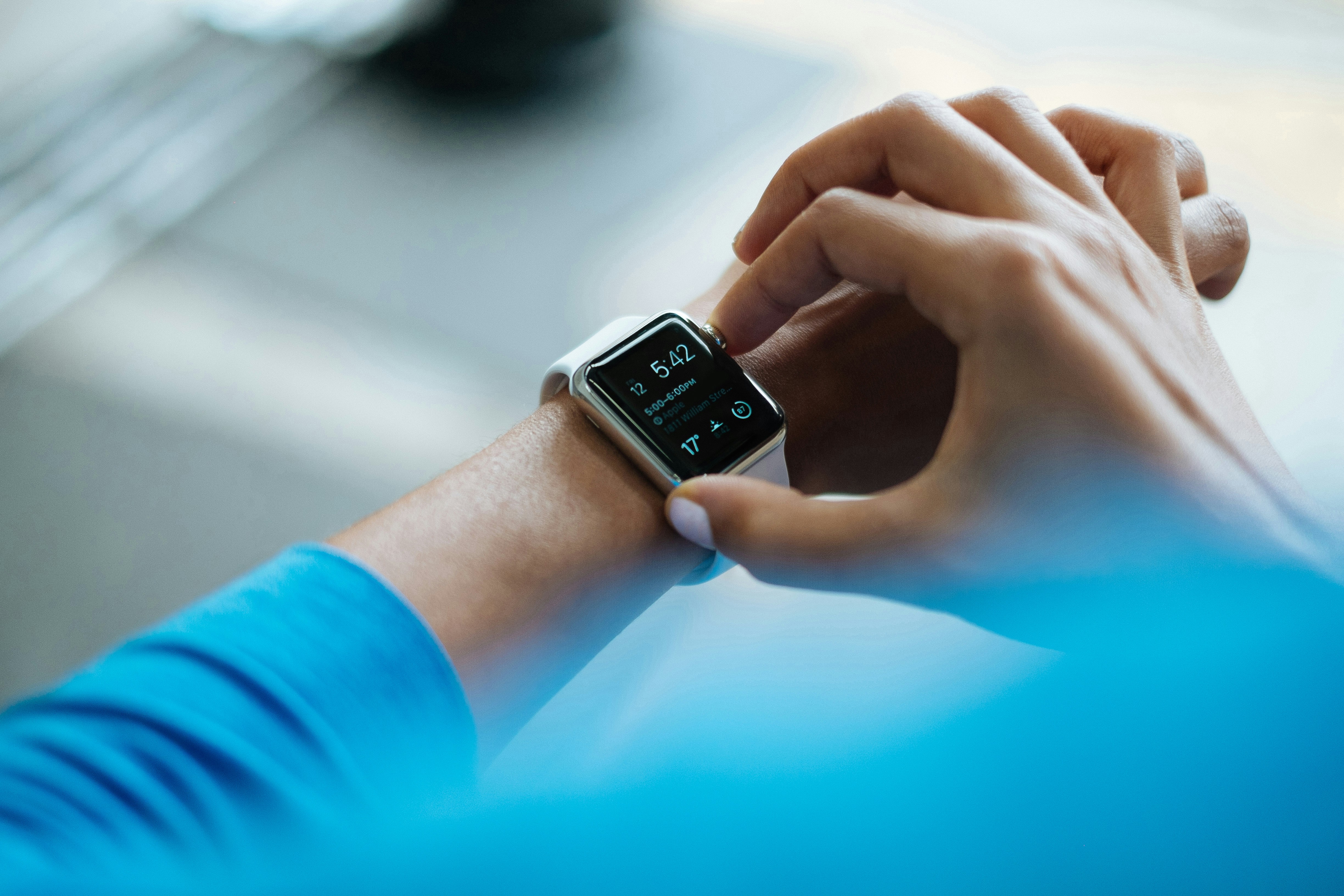Mar 18, 2025

The medical device industry is rapidly evolving, driven by technological advancements and a growing demand for innovative solutions that improve patient outcomes and healthcare delivery. As we approach 2024, several emerging trends are poised to revolutionize the way medical devices are developed, used, and integrated into healthcare systems.
This article explores the cutting-edge technologies and strategies that are shaping the future of medical devices, offering valuable insights for healthcare professionals and industry stakeholders alike.
State of the Medical Device Industry
Current market size and growth projections of the medical device market
The global medical device market is a massive and rapidly expanding industry. According to a report by MarketsandMarkets, the global medical device market was valued at a staggering $432.6 billion in 2022 and is projected to reach a whopping $657.9 billion by 2027, growing at an impressive compound annual growth rate (CAGR) of 8.8% during that period.
This remarkable growth can be attributed to several factors, including an aging global population, an increasing prevalence of chronic diseases, rising healthcare expenditure, and the continuous development of innovative medical technologies. As the demand for healthcare services continues to rise, the need for advanced and efficient medical devices becomes increasingly crucial.
Regulatory landscape for medical devices
Ensuring the safety and efficacy of medical devices is of utmost importance, which is why the industry is heavily regulated by various governing bodies worldwide. In the United States, the Food and Drug Administration (FDA) plays a pivotal role in overseeing the development, testing, and marketing of medical devices.
Similarly, in Europe, the Medical Device Regulation (MDR) sets stringent standards for medical device manufacturers, covering aspects such as clinical evaluation, post-market surveillance, and traceability. Compliance with these regulations is essential for companies to gain market access and maintain consumer trust.
Interestingly, regulatory bodies are also adapting to the evolving landscape of medical devices. For instance, the FDA has introduced a Digital Health Software Precertification (Pre-Cert) Program to streamline the approval process for software-based medical devices, recognizing the rapid pace of innovation in this field.
Competitive landscape and key players in the industry
The medical device industry is highly competitive, with a diverse range of players vying for market share. Established giants like Medtronic, Abbott Laboratories, and Siemens Healthineers have long dominated the market, leveraging their vast resources, expertise, and global reach.
However, the industry is also witnessing a surge of innovative startups and emerging companies that are challenging the status quo with cutting-edge technologies and disruptive business models. Companies like Intuitive Surgical, with their robotic-assisted surgical systems, and iRhythm Technologies, with their wearable cardiac monitoring devices, are excellent examples of how new players are shaping the future of medical devices.
Moreover, strategic partnerships, mergers, and acquisitions are common in the industry, as companies seek to expand their product portfolios, access new markets, and leverage complementary technologies. For instance, the recent acquisition of Cardiac Dimensions by Medtronic highlights the importance of consolidation in this highly competitive landscape.
Emerging Trends in Medical Device Technology
Miniaturization and wearable technology
One of the most exciting key trends in the medical device industry is the miniaturization of technology, enabling the development of wearable devices and implantable sensors that can seamlessly integrate into our daily lives.
Imagine a tiny sensor, no larger than a grain of rice, that can be implanted under your skin to continuously monitor your blood glucose levels or track your heart rate. This level of miniaturization not only improves patient comfort but also opens up new possibilities for real-time monitoring and early intervention.
Wearable medical devices, such as smartwatches and fitness trackers, are already gaining widespread adoption among health-conscious individuals. Companies like Apple, Fitbit, and Garmin are leading the way in this space, offering devices that can track various health metrics, including heart rate, sleep patterns, and physical activity levels.
But wearable technology is not just limited to fitness trackers. Companies like BioIntelliSense are developing advanced wearable medical devices that can monitor vital signs, detect potential health issues, and even predict adverse events like sepsis or respiratory failure.
Internet of Medical Things (IoT) integration
The Internet of Things (IoT) is revolutionizing the way medical devices collect, transmit, and analyze data. By connecting medical devices to the internet and enabling them to communicate with each other, healthcare providers can access real-time data, monitor patient conditions remotely, and make more informed decisions.
Imagine a scenario where a patient's implantable cardiac device seamlessly transmits data to their healthcare provider, allowing for continuous monitoring and early detection of any potential issues. Or a hospital room equipped with IoT-enabled devices that can automatically adjust lighting, temperature, and even medication dosages based on the patient's real-time vital signs and preferences.
IoT integration also facilitates remote patient monitoring, reducing the need for in-person visits and improving access to healthcare services, especially for patients in remote or underserved areas. Companies like Philips Healthcare and Medtronic are already leveraging IoT technologies to develop remote monitoring solutions for various medical conditions, including chronic diseases and post-operative care.
Artificial intelligence and machine learning
Artificial intelligence (AI) and machine learning (ML) are transforming the way medical devices are designed, developed, and utilized. By integrating these technologies into medical devices, manufacturers can unlock a wealth of new capabilities and insights that can significantly improve patient outcomes.
One powerful application of AI in medical devices is in the realm of diagnostic imaging. Companies like Enlitic and Zebra Medical Vision are developing AI-powered algorithms that can analyze medical images, such as CT scans and X-rays, with exceptional accuracy, potentially reducing the risk of misdiagnosis and enabling earlier detection of diseases.
Machine learning algorithms can also be used to optimize device performance and personalize treatment plans. For instance, an AI-powered insulin pump could continuously analyze a patient's blood glucose levels, dietary habits, and activity patterns, adjusting insulin delivery accordingly to better manage their diabetes.
Moreover, AI and ML can play a crucial role in predicting potential health risks or complications. By analyzing vast amounts of patient data, these technologies can identify patterns and risk factors that may not be apparent to human clinicians, enabling proactive interventions and preventive measures.
Impact of Emerging Trends on the Healthcare Industry
Improved patient outcomes and quality of patient care
The integration of emerging trends in medical devices has the potential to revolutionize patient care and significantly improve outcomes. Imagine being able to detect and diagnose a life-threatening condition like cancer at an incredibly early stage, thanks to the power of AI-assisted diagnostic imaging. Or envision a world where patients with chronic conditions like diabetes can effortlessly manage their health with the help of smart, personalized devices that seamlessly integrate into their daily lives.
One compelling example is the use of wearable continuous glucose monitoring (CGM) devices for diabetic patients. These devices eliminate the need for painful finger pricks and provide real-time data on blood sugar levels, enabling patients to make informed decisions about their diet, exercise, and medication. By closely monitoring and managing their condition, patients can reduce the risk of complications and improve their overall quality of life.
Cost savings for providers in the medical industry
Beyond improving patient outcomes, emerging trends in medical devices also offer substantial cost savings for healthcare providers. Let's take a closer look at the impact of remote patient monitoring (RPM) devices. By enabling healthcare professionals to monitor patients' vital signs and health conditions from afar, RPM devices can significantly reduce the need for hospital visits and readmissions.
For instance, a patient recovering from a heart attack could be monitored remotely using an RPM device, allowing healthcare providers to track their progress, adjust medications, and provide guidance without requiring frequent in-person visits. This not only reduces the burden on healthcare facilities but also minimizes the risk of hospital-acquired infections and other complications associated with extended hospital stays.
Increased efficiency and accuracy in diagnostics and treatment
Emerging technologies like AI and machine learning are revolutionizing the field of medical diagnostics and treatment planning. Imagine an AI-powered system that can analyze a patient's medical history, genetic profile, and various diagnostic tests with unparalleled speed and accuracy, providing healthcare professionals with actionable insights and personalized treatment recommendations.
One example that highlights the power of AI in diagnostics is the use of deep learning algorithms for interpreting medical images. Companies like Arterys are developing AI systems that can detect and quantify cardiovascular conditions, such as coronary artery disease and heart valve abnormalities, with an accuracy that rivals or even surpasses human experts. This not only improves diagnostic precision but also reduces the time and resources required for manual image analysis.
Challenges and Opportunities of the Medical Device Sector
Regulatory hurdles and privacy concerns
While the potential benefits of emerging trends in medical devices are undeniable, their implementation is not without challenges. One of the most significant hurdles is navigating the complex regulatory landscape. Medical device manufacturers must work closely with regulatory bodies to ensure that their products meet stringent safety and efficacy standards, which can be a time-consuming and costly process.
Moreover, the collection and transmission of sensitive health data raise legitimate concerns about data privacy and security. As medical devices become increasingly connected and integrated with various digital platforms, the risk of cyber threats and data breaches increases. Addressing these concerns is crucial to maintain patient trust and ensure compliance with data protection regulations, such as the Health Insurance Portability and Accountability Act (HIPAA) in the United States and the General Data Protection Regulation (GDPR) in the European Union.
Adoption barriers and training for healthcare professionals
Implementing emerging medical device technologies often requires a significant investment in training and education for healthcare professionals. These advanced devices may require specialized knowledge and skills to operate effectively and interpret the data they generate accurately.
For instance, imagine a scenario where a hospital introduces a sophisticated AI-powered diagnostic system. Healthcare professionals would need extensive training to understand how to input patient data correctly, interpret the system's outputs, and effectively incorporate the insights into their clinical decision-making process.
Additionally, there may be cultural or organizational barriers to the adoption of new technologies. Some healthcare professionals or facilities may be resistant to change, preferring to stick with familiar methods and processes. Overcoming these barriers requires effective change management strategies, open communication, and a willingness to embrace innovation for the benefit of patient care.
Investment opportunities and potential for industry growth
Despite the challenges, the medical device industry presents significant investment opportunities, particularly in the areas of emerging technologies and innovative startups. As the demand for advanced medical devices continues to grow, companies that can develop cutting-edge solutions and capitalize on emerging trends are positioned for substantial growth and market success.
Venture capitalists and investors are increasingly recognizing the potential of this sector, fueling the growth of medical device startups and supporting the development of groundbreaking technologies. For example, companies like Insightec, which develops focused ultrasound devices for non-invasive treatments, and Neuralytic, which uses AI to optimize cancer therapy, have attracted substantial investments from venture capital firms and strategic partners.
Furthermore, the medical device industry is ripe for strategic partnerships and collaborations. Established medical device companies can benefit from partnering with innovative startups, gaining access to cutting-edge technologies and fresh perspectives. Conversely, startups can leverage the expertise, resources, and market reach of larger companies to accelerate their growth and commercialization efforts.
Navigating the complexities of the medical device industry can be daunting, but the potential rewards for companies that can effectively harness emerging trends are substantial. By staying ahead of the curve, embracing innovation, and fostering strategic partnerships, companies can position themselves as leaders in this rapidly evolving landscape, ultimately driving improved patient outcomes and transforming the future of healthcare.
FAQs: The Future of Medical Devices and Remote Patient Monitoring
Q: What is the role of miniature medical devices in emerging trends?
A: Miniature medical devices, such as implantable sensors and wearable technology, play a crucial role in enabling continuous monitoring and real-time data collection. These devices can track vital signs, activity levels, and other health metrics, providing healthcare providers with
Q: How is the use of AI-optimized medical devices impacting the industry?
A: Artificial intelligence (AI) and machine learning are being increasingly integrated into medical devices to enhance their capabilities. AI-powered devices can analyze vast amounts of data, identify patterns, and provide valuable insights for diagnosis and treatment planning. Machine learning algorithms can also optimize device performance, personalize treatment plans, and predict potential health risks.
Q: What are the benefits of remote patient monitoring devices?
A: Remote patient monitoring devices equipped with telemedicine capabilities offer several benefits, including improved access to healthcare services, reduced need for in-person visits, and continuous monitoring of patient conditions. These devices enable healthcare providers to track vital signs, monitor adherence to treatment plans, and make informed decisions remotely, leading to better patient outcomes and cost savings.
Q: How are emerging trends addressing personalized medicine?
A: Personalized medicine is an emerging approach that tailors treatments and devices to an individual's unique genetic makeup, lifestyle, and health conditions. Technologies like 3D printing enable the creation of customized medical devices, such as prosthetics, implants, and surgical guides. Additionally, AI and machine learning can analyze patient data to develop personalized treatment plans, improving the effectiveness of interventions and reducing the risk of complications.





